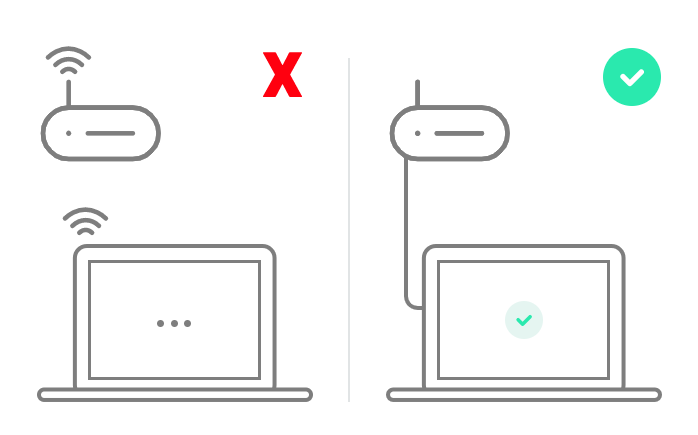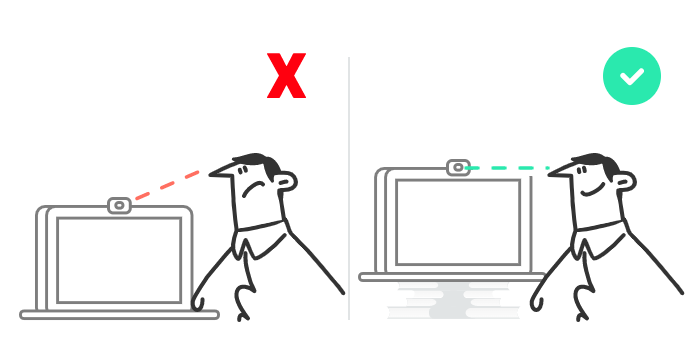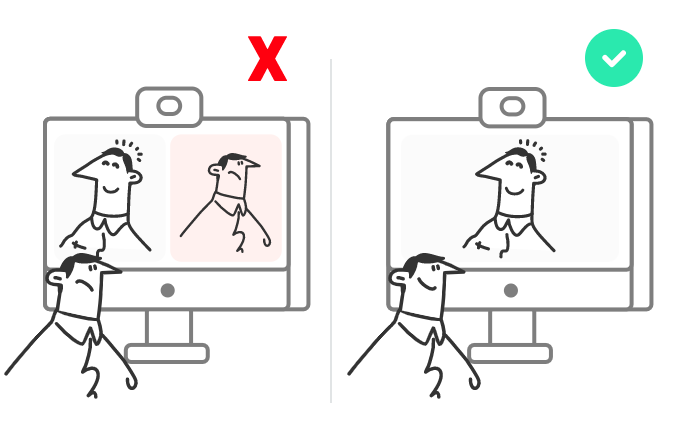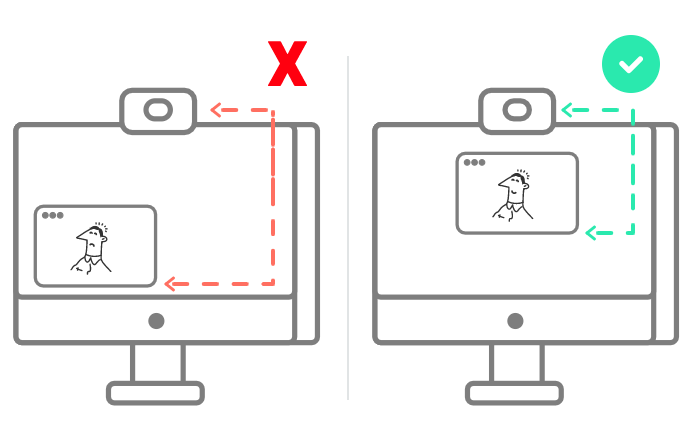Internet Connection

Camera


While the exact number is still up for debate, a big percentage of the information conveyed in a conversation is nonverbal — things like facial expressions, hand motions, and body posture.[8] Your ability to show and understand feelings is severely impacted when these nonverbal cues are not there.[9] Also, when your brain does not get these nonverbal cues during a conversation, it works extra hard to fill in the void, leaving you feeling tired and drained.[10] Make sure you're well framed so energy levels stay high for everyone on the call.

Environment


Video


Similar to keeping an arm's length distance from your camera, moving your video window towards the top of your monitor reduces the angle between your eyes and the camera, making it easier for you to make eye contact. Also, looking at larger faces tells your brain that you're engaging in a more intimate conversation.[14] Shrinking the video size will help your brain relax a bit.
Stay in touch for more research-based info on how to look awesome in your video calls.
References
1. Kaufman, Jeff (2020). Ethernet Is Worth It For Video Calls. Retrieved 2021-04-14.
2. McKinlay, Thomas (2021). High quality audio makes you sound smarter. Retrieved 2021-04-14.
3. Newman, E. J., & Schwarz, N. (2018). Good Sound, Good Research: How Audio Quality Influences Perceptions of the Research and Researcher. Science Communication, 40(2), 246–257.
4. Coyle, Stephen (2019). AirPods Pro Bluetooth Latency. Retrieved 2021-04-14.
5. Kaufman, Jeff (2020). Wired Headsets for Video Calls. Retrieved 2021-04-14.
6. Yong, Ed (2016). The Incredible Thing We Do During Conversations. The Atlantic. Retrieved 2021-04-14.
7. Lucas M. Seuren, Joseph Wherton, Trisha Greenhalgh, Sara E. Shaw, Whose turn is it anyway? Latency and the organization of turn-taking in video-mediated interaction. Journal of Pragmatics, Volume 172, 2021, Pages 63-78.
8. Nonverbal Communication: How Body Language & Nonverbal Cues Are Key. Lifesize Blog. Retrieved 2021-04-14.
9. David T. Nguyen and John Canny. 2009. More than face-to-face: empathy effects of video framing. In Proceedings of the SIGCHI Conference on Human Factors in Computing Systems (CHI '09). Association for Computing Machinery, New York, NY, USA, 423–432.
10. Sklar, Julia. (2020). ‘Zoom fatigue’ is taxing the brain. Here's why that happens. Retrieved 2021-04-14.
11. Hietanen J. K. (2018). Affective Eye Contact: An Integrative Review Frontiers in psychology, 9, 1587.
12. Bailenson, J. N. (2021). Nonverbal Overload: A Theoretical Argument for the Causes of Zoom Fatigue. Technology, Mind, and Behavior, 2(1).
13. Fauville, Geraldine and Luo, Mufan and Queiroz, Anna C. M. and Bailenson, Jeremy N. and Hancock, Jeff, Nonverbal Mechanisms Predict Zoom Fatigue and Explain Why Women Experience Higher Levels than Men (April 5, 2021).
14. Gary M. Olson and Judith S. Olson. 2000. Distance Matters. Human Computer Interaction 15, 2 (September 2000), 139–178.
Internet Connection


